Jean-Pierre Rennaud
General Delegate, Livelihoods Venture
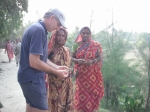
Jean-Pierre went a few days ago in the Sundarbans in India to follow an ecosystem restoration project. Innovation in development, community involvement, are some of subjects he is talking about in the interview we made…
Livelihoods: Hello Jean-Pierre, you are coming back from India, you were there with an NGO called NEWS on a project of ecosystem restoration. What can you tell us about this project? What is in progress there?
JPR: This project is localized in the Sundarbans area and has started last year by the planting of 700 ha of mangrove. This year we are on the way to finalize 2000 ha, that means more than 10 million plants. The planting campaign has started in September and will take two months. The planting process requires an upstream work: people have to collect themselves the seeds in the river, and then care for them in a “nursery” for two months before planting permanently.
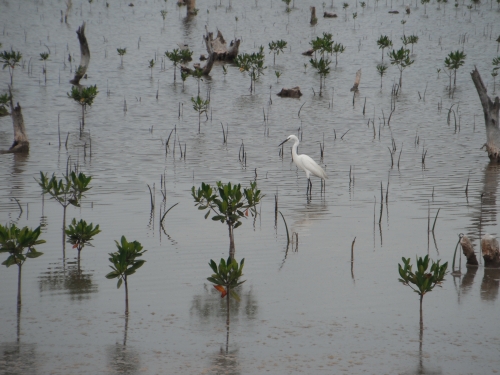
I was amazed to see how life came back where the plants grew since last year. There are now 700ha of 50cm high plants, and birds, crabs, fish etc. are back. So I am very optimistic concerning the capability of this project to renew the biomass and thus bring back life to the field and to people.
LH: Talking about these people, are the communities really involved in this project, and how did they welcome an organization like Danone or Livelihoods?
JPR: This is definitely their project, we (Livelihoods) and NEWS just to help them make it happen. I attended a meeting there with 400 people of the village; the chief of the village called the penjayat said “we are planting the tree of life…” I was stroken by this expression: “tree of life”. That’s what it means and represents for them, because these trees will protect their crops, their fields but also their houses. Two years ago there was a huge storm called Haila which destroyed the artificial protection made by the people there to protect themselves. They are deeply conscious that the real protection of the population will come by the reconstruction of nature: the planting of mangrove trees is one of the ways to that.
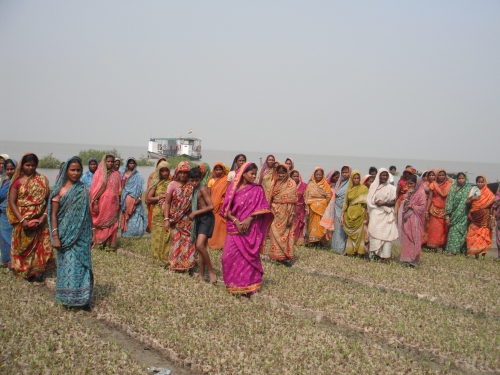
It is quite a long process, but I saw that these people, including young and old men, women and chidren, are ready and willing to do it. I asked them “don’t you care about grazing, about fishermen with their nets who can destroy your plants?” They said “it’s impossible, we keep our eyes open in our plantations, and we are caring for them as our children”. We are sure that this is the sustainable way to keep a plantation, through the real involvement of the population.
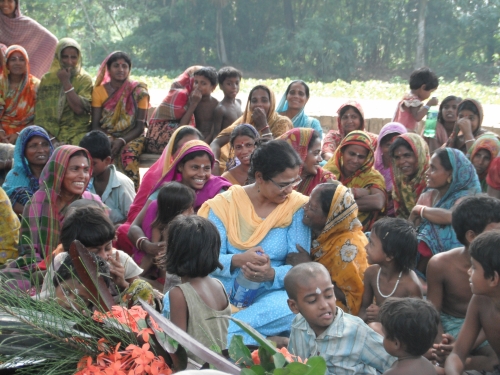
Speaking about how the population welcomed Livelihoods, they were pleasantly surprised to see us come to them, it was the “first time” for them to see “someone like me coming from far away to help them as I did”. They are happy to see that we are involved with them. I respond that we will always be there at their side and will be back again and again to look at the plantations. I have in mind this picture where an old woman, in a crowd of people told to Ajanta [Dey, project coordinator] with great emotion “thank you to help us maintain life for our children”. How could they be more involved?
LH: Are there some new initiatives on development coming out of this project?
JPR: Yes, it is starting. To give you two main examples:
Firstly: NEWS NGO is working mainly and exclusively with the local communities to improve their livelihoods. Improving livelihoods is also taking care of people’s health. The idea for NEWS is to create a concept they called “Health camp”: medical doctors offer free consultations to the population and also give medicines for free where needed. For NEWS this initiative is a great way to keep and reinforce the link with the community which is the main motivation of the entire process.
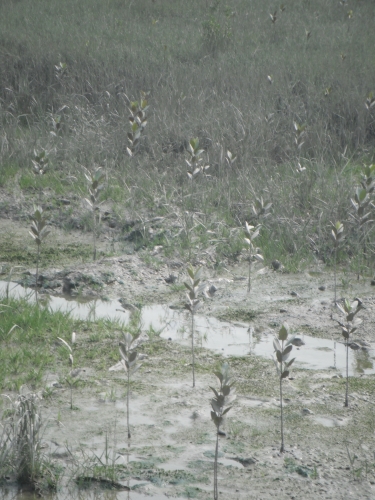
Secondly: people realized very quickly that create a nursery is a kind of “know how” which can be useful for other needs. Instead of mangrove trees, people of Sundarbans are also planning to plants fruits trees, bamboo for the construction of houses, etc. And this new approach could be the beginning of a new story, another project that I would like to call “nursery entrepreneurship”, and we could be a part of it.
LH: Didn’t you talk about carbon in India?
JPR: Oh yes, I am talking about carbon since I started to talk with you…the seedlings we were talking of will be strong and big trees that will sequester carbon. That’s one of our missions but also people’s one. NEWS has already done a huge work especially on stakeholder’s consultation to explain to the community the benefit of this project for the climate. We find that the message is understood. In the Sundarbans they talk about “creating a new air.” For us (Livelihoods) and for them now, we are all actors in development through the carbon economy.

